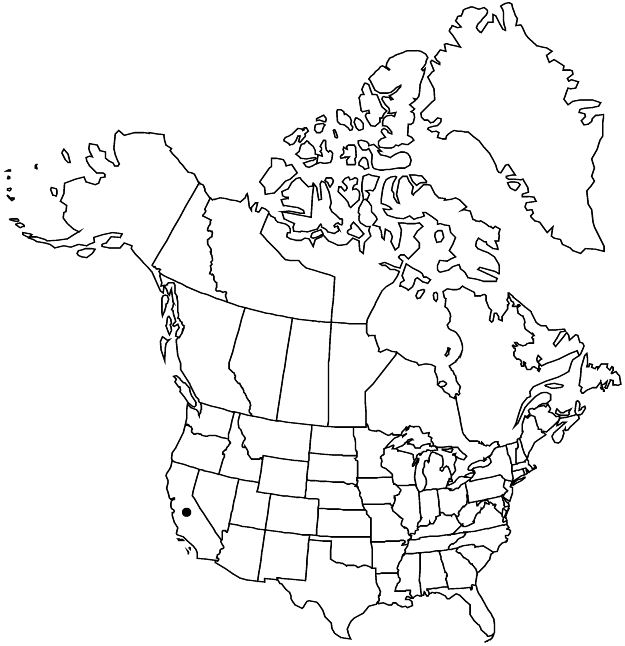Ceanothus lemmonii
Proc. Davenport Acad. Nat. Sci. 5: 192. 1889.
Shrubs, evergreen, 0.5–1 m. Stems ascending to spreading, not rooting at nodes; branchlets pale green to grayish green and glaucous, not thorn-tipped, round in cross-section, flexible to ± rigid, sparsely villosulous. Leaves: petiole 2–6 mm; blade flat, narrowly elliptic to oblongelliptic, 13–35 × 6–15 mm, base cuneate to rounded, margins serrulate to denticulate most of length, not revolute, not wavy, teeth 34–45, apex acute to obtuse, abaxial surface pale green to grayish green and glaucous, villosulous, especially on veins, adaxial surface green, strigillose; pinnately veined or weakly 3-veined from base. Inflorescences axillary or terminal, umbellike to racemelike, 2–6.5 cm. Flowers: sepals, petals, and nectary pale to deep blue. Capsules 3–4 mm wide, lobed near apex; valves smooth, crested. 2n = 24.
Phenology: Flowering Apr–May.
Habitat: Rocky slopes and flats, open sites, conifer forests, oak and pine woodlands.
Elevation: 200–1300 m.
Distribution

Calif.
Discussion
Ceanothus lemmonii occurs in the inner North Coast Ranges, Klamath Mountains, and the western slope of the Cascade Range and northern Sierra Nevada. H. McMinn (1944) reported putative hybrids with C. foliosus, C. integerrimus, and C. oliganthus var. sorediatus.
Selected References
None.
Lower Taxa
"serrulate" is not a number."thin" is not a number.